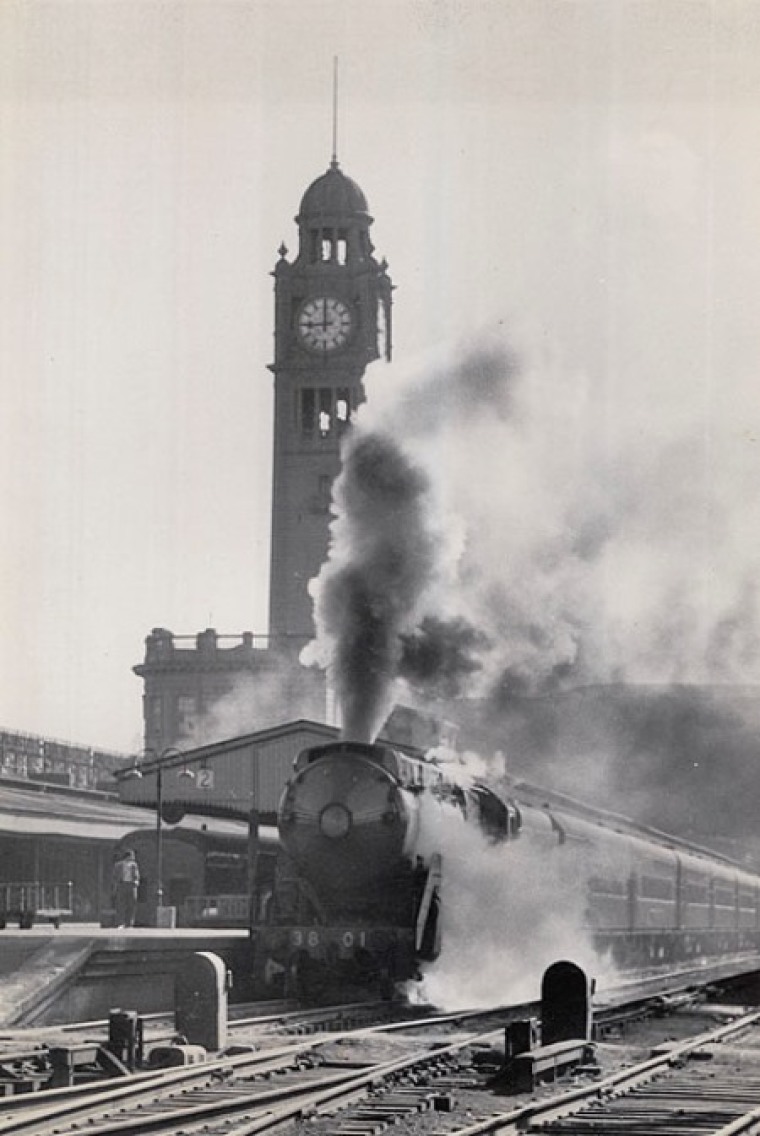

The 32 Class steam locomotive hauled light freight and inter-urban passenger trains on the New South Wales Government Railways. By the time I began on the railways at Goulburn round-house as a trainee engineman in 1968, the 32 Class was utilised for shunting purposes.
The locomotive inspector at the round-house took us young lads down into the pit under a 32 Class in order to show us and to oil the rods and motions. We were shown how to fill each plug with the long spouted oil can to ensure the moving rod motions of a steam engine worked efficiently and smoothly.
The principle of a steam engine is that a boiler filled with water is heated which produces steam which in turn powers the locomotive. A steam powered injector transfers water from the tender which was attached to the rear of the steam engine. The tender contains both the coal for the fire and a large water tank.
Obviously, the worst thing for steam engine operation is was to run out of steam. No steam, no power. There were two ways one might run out of steam: either the fire goes out, or you run out of water.
Should there be no water and the fire strong, the inevitably would happen, the lead would drop – meaning the lead protecting the boiler from direct heat would break apart. This was a real 'no-no', and that was drummed into us when we were trainees.

First shunt job
The first shunting job I was assigned after finishing fireman school was working the North Yard shunter on a 32 Class steam.
We signed on at 11.00pm at the Goulburn Round House and relieved the afternoon shift crew. Shunting was up and back, up and back, up and back, lifting one wagon to one line, then another to a different line, making up trains. It was serious, as lives were at risk.
At 3.00am it was smoko time. The driver said he'd be back soon, and I was to keep an eye on things. I checked the fire and water gauge regularly; the time dragged on and I had no idea where the driver or the shunters were. I was so naive.
I sat down on the fireman's seat, and next thing I knew it was 5.00am. I woke with a start. Water wasn't to be seen in the water gauge and the fire contained only embers, it was nearly out.
It was my nightmare. Would the lead drop on my first shunting job? Even though I was so young, I didn't panic. I somehow managed to get the fire awoken and when there was marginally enough heat for steam, I also got the injector to function and thereby saved my bacon!
When the driver and shunters returned 45 minutes later I had that 32 Class roaring with steam. No one said a word, but what a lesson about responsibility I had learnt.

Responsibility
The Good Book has a great deal to say about both personal and corporate responsibility. By far the greatest responsibility ever taken by a man was when Jesus took upon Himself the sin of every person and the corporate sin of every board room, committee or association upon that Cross.
Yes, Jesus' offer for forgiveness extends to - the sport selector who put his own child on the team rather than your child who is clearly the better player. Yes, even for despot political leaders would could name. Yes, even my own sinful self righteousness.
But although forgiveness is offered, sadly, most reject it.
Responsibility plays out in two ways for a follower of Jesus Christ. There is forgiveness that is sought, and I too forgive (and that is not easy but surprisingly fulfilling). Moreover as a response for what Jesus has done for me. Helping others becomes as a joy in the Lord in servant-hood and sacrifice.

Dr Mark Tronson is a Baptist minister (retired) who served as the Australian cricket team chaplain for 17 years (2000 ret) and established Life After Cricket in 2001. He was recognised by the Olympic Ministry Medal in 2009 presented by Carl Lewis Olympian of the Century. He mentors young writers and has written 24 books, and enjoys writing. He is married to Delma, with four adult children and grand-children. Dr Tronson writes a daily article for Christian Today Australia (since 2008) and in November 2016 established Christian Today New Zealand.
Mark Tronson's archive of articles can be viewed at http://www.pressserviceinternational.org/mark-tronson.html